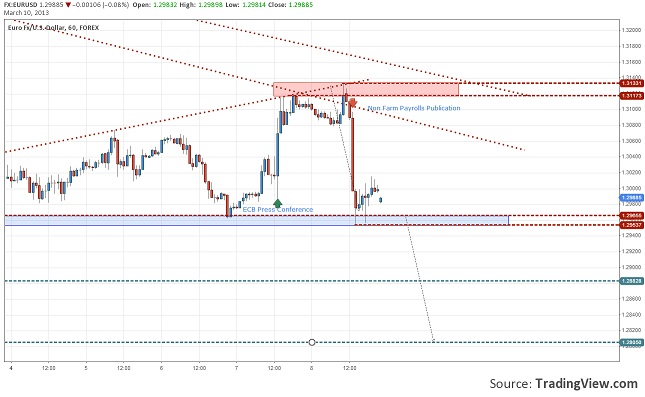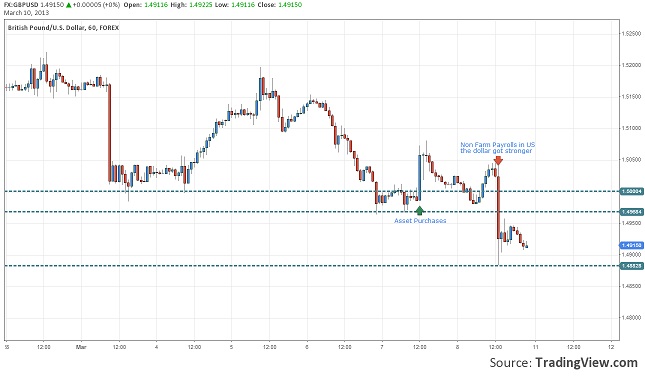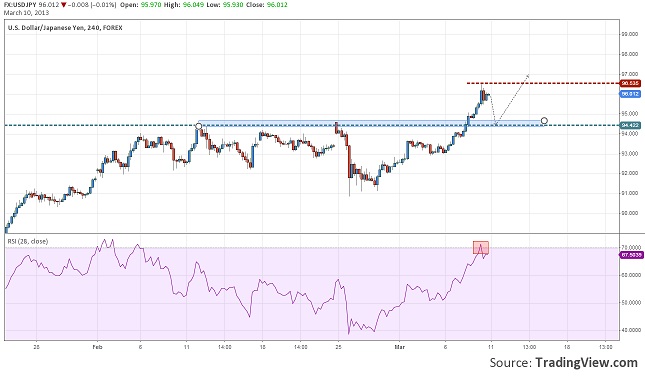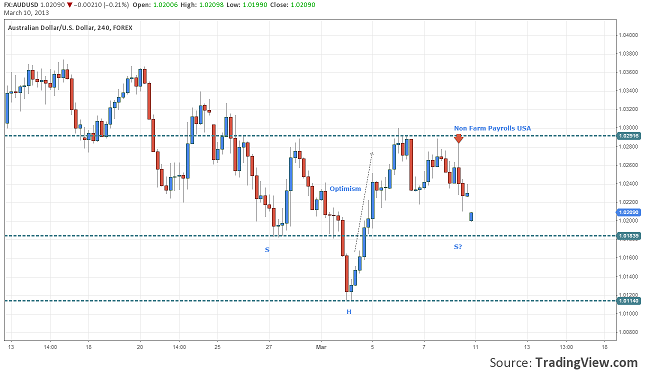USA
ISM Non-Manufacturing PMI 56.0 better than 55.0 that was expected;
ADP Non-Farm Employment Change came 198k;
Factory Orders -2%, better than -2.2% forecast;
Trade Balance -44.4B;
Unemployment Claims 340k;
Consumer Credit 16.2B over 15.2B forecast;
Bank stress test results;
Non-Farm Employment Change 236k;
Unemployment rate 7.7%;
The week that just passed brought pretty good news from the US real economy. Just one of the seven most important macroeconomic indicators that were published last week was under the market expectations and that is the Trade Balance that came -44.4 billion dollars, meaning the imports are still higher than the exports. Other good news came from the bank stress test. 17 of the 18 banks that took the test are prepared for severe recession, concluding that the strict measures taken have prepared the financial sector for even worse periods. None the less the most important were the Non-Farm Payrolls that was published at 236k, with a huge difference if we look at the forecast, and the unemployment rate that got down to 7.7%. With this good data from the labor market, the FED is getting one step closer to ending the Quantitative Easing program.
Euro Zone
Spanish Unemployment Change 59.4k, fewer than 77.5k expected;
Spanish Services PMI 44.7;
Italian Services PMI 43.6;
Final Services PMI on Euro Zone 47.9;
Retails Services 1.2% over expectation;
Spanish Bond Auction, the yield was 4.92 down from 5.20;
German Factory Orders -1.9%;
Minimum Bid Rate 0.75%;
ECB Press Conference
German Industrial Production 0.0%;
The data posted for the Euro Zone was not that good. We can see an improvement in the Spanish unemployment, the Spanish bond auction, and better retails services, but the German economic data has disappointed with lower factory orders and industrial production. Still the Euro was revived by the ECB press conference, where Mario Draghi, the banks governor, was confident in the improving economy. One of the arguments is that ECB maintained the key interest rates at 0.75%
Looking at the EURUSD chart we will see that the Euro tried to be traded higher, it got back to the trend line but couldn’t break it and after the NFP publication it got back under 1.3. Even though the technical indicators are signaling a possible reversal, the dollar is getting stronger on the economic data. The upcoming week is bringing new indicators like the retails sales, PPI and CPI for the US. For the Euro Zone the most important event will be the Economic Summit. If the good news will keep on coming, then the pressure might push the quotation under 1.2965, targeting 1.2882 and 1.28. On the other hand if the buyers will keep on trying, then we might see another retest on the trend line zone.
UK
Construction PMI 46.8 under the forecast;
Services PMI 51.8;
Asset Purchase Facility remained at 375B;
Official Bank Rate 0.5%;
The data posted for UK this week were mixed. A lower construction PMI but a better services PMI. One of the indicators that triggered an 80 pips move in one minute was the Asset Purchase Facility. It came as a surprise for the market that the volume of purchases was not changed. The official bank rate remained unchanged at 0.50%. In the upcoming week the manufacturing production will be published.
GBPUSD dropped under 1.5, now at 1.4880. The dollar got strong on Friday, and the pound got even weaker. The down move might continue to 1.4800.
Japan
Average Cash Earnings climbed at 0.7% from -0.3%;
Current Account 0.36T, better than 0.11T the previous number;
Final GDP 0.0%;
Economy Watchers Sentiment up to 53.2;
The Japanese economy seems to recover especially now after the yen depreciated over 14% in the last months, even though new stimulus was not added by the central bank. Shirakawa’s mandate as governor of BoJ is almost over; one of the nominee and favorites for the position is Haruhiko Kuroda. A calm week is expected for the yen, with no major events.
The Japanese yen made new lows in front of the American dollar, hitting 96.53. The 28 RSI hit the overbought zone, and a Dark Cloud Cover appeared at the top. A dip back to 94.42 would be an interesting move before USDJPY to make new higher highs.
Australia
Building Approvals -2.4% way under the 2.8% expectations;
Retail Sales 0.9%;
Current Account -14.7;
Cash Rate 3.00%;
GDP q/q maintained at 0.6%;
Trade Balance -1.06B;
The Australian economy seems to be a little better. Even though the building approvals dropped at -2.4% and the trade balance dropped at -1.06B, they had an increase in the current account and in the retails sales. Keeping the rate at the same level was a sign from the RBA that they didn’t think that it was necessarily to cut it more. And the confirmation appeared with the GDP that was in line with expectations at 0.6%, but the previous one was revised at 0.7% from 0.5%. Important for next week are new data from the labor market, employment change and unemployment rate.
We can see that the Australian dollar was pushed up last week before Friday on optimism that the economy will get better, maybe without cutting again the interest rate. This has changed on the last trading day because of a stronger dollar that pushed the quotation back to 1.02. It is a slight chance, but might happen, to have an Inverted Head and Shoulders, we just have to wait and see.
Canada
Ivey PMI dropped to 51.1;
Overnight Rate remained at 1.0%
Building Permits down to up to 1.7% from -10.4% previous, but under the estimates of 5.4%;
Trade Balance 0.2%;
Housing Starts 181k;
Employment Change 50.7k;
Unemployment Rate 7.0%;
The Canadian economy has slightly come back during the past week. The most important data were from the labor market, where we had a better employment change and an unemployment rate down to 7.0%.
The USDCAD is in a clear up move, trend that started at the beginning of the year. For the moment the Canadian dollar managed to stop the depreciation and it finds itself in a consolidation 1.0335 level. A break through the resistance will target 1.04 and 1.0428, while a fall under the support zone might help it to get back to the previous support.
FX: Weekly Wrap Up (USD, EUR, GBP, JPY, AUD, CAD) by Razvan Mihai







